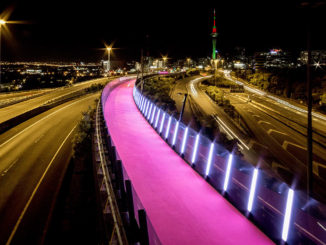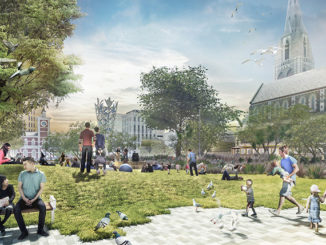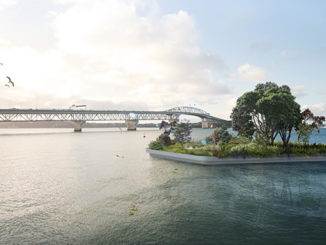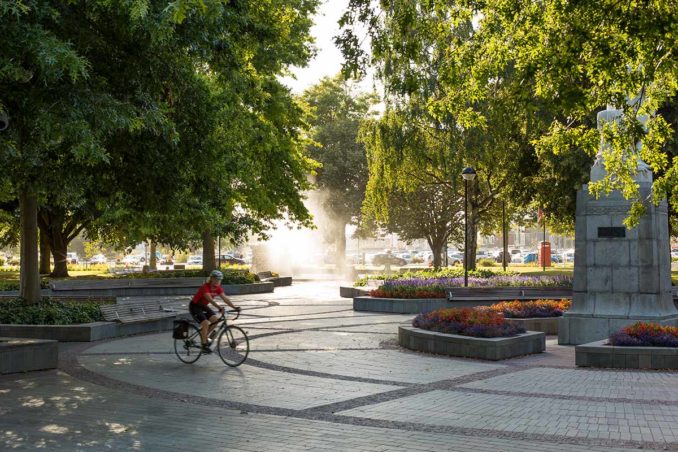
One of the best-loved spaces in Christchurch (New Zealand) city centre is open to the public again, and in a landscape that still bears significant scars, it once again welcomes locals and visitors with its soft, green and familiar character.
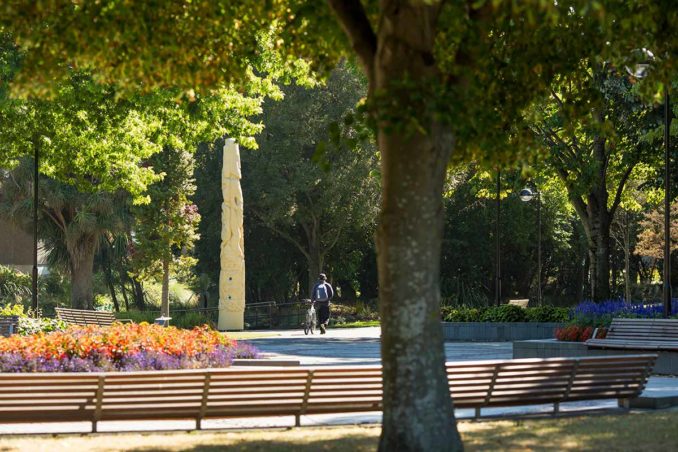
In 1861, Pita Te Hori, the first Upoko of Te Rūnanga o Ngāi Tūāhuriri, holder of mana whenua over what is now Ōtautahi Christchurch, instructed his successors to:
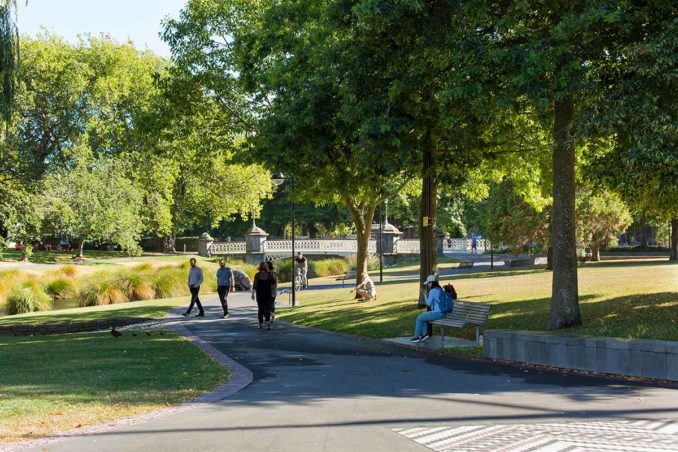
Kia atawhai ki te tangata (Care for the people)This core value has guided the development of Victoria Square, a place of special significance for Ngāi Tūāhuriri; a central meeting space and a key mahinga kai (traditional food) resource amongst the waterways feeding into the Ōtākaro Avon River.
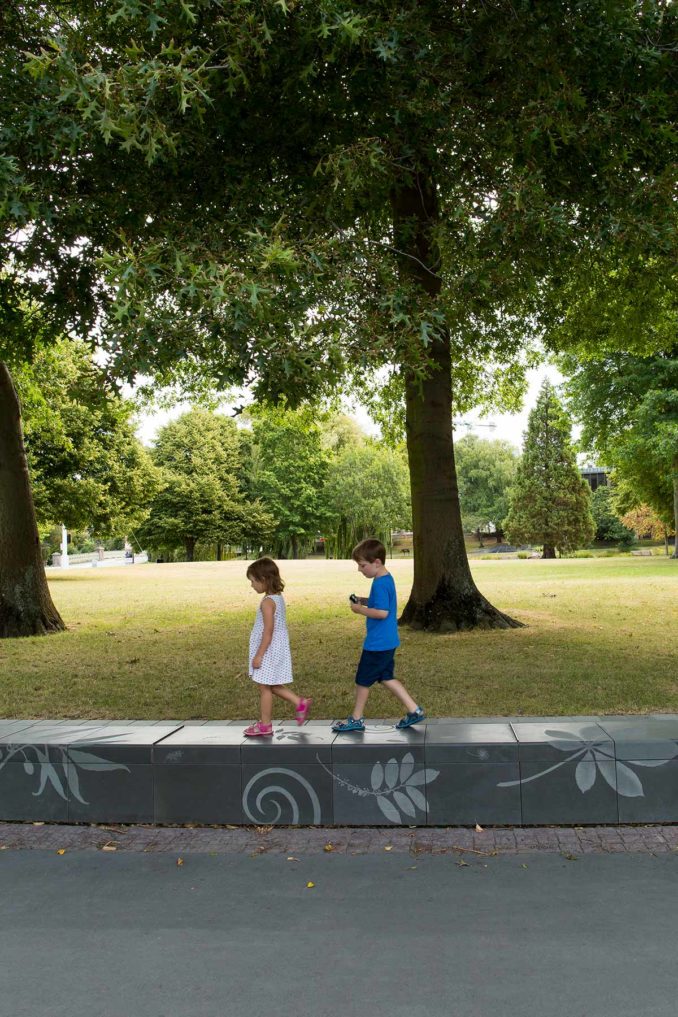
Following colonial settlement, the site became ‘Market Square’, a trading space for Ngāi Tahu and Pākeha (Colonial) settlers. As the colonial population grew, Māori were increasingly distanced, as evidenced by statues of Queen Victoria and James Cook and the name change to Victoria Square.
After significant damage by the 2010–2011 Canterbury earthquakes, community engagement was undertaken to determine the direction of the square’s restoration. Feedback supported retaining the existing character, along with greater recognition of our all-but-invisible shared cultural history.
A partnership between Government and Iwi recognized under Te Tiriti o Waitangi (Treaty of Waitangi) informed the underlying narrative. The design was developed collaboratively between central and local government, mana whenua, the design team, artists and a community.
Heritage features are a key part of the square, and people supported their protection. Victoria Square’s most recognisable features, including the two statues, remain as they were; and the 87-year-old Bowker Fountain, Australasia’s first illuminated electric fountain, has been repaired and restored.
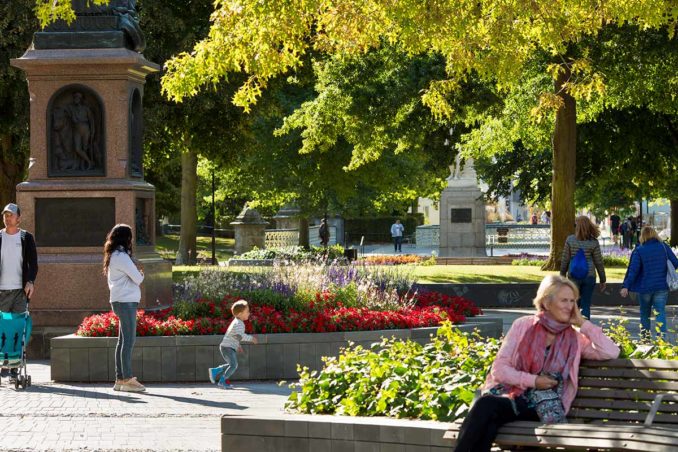
Ngāi Tūāhuriri provided input into all stages of the process. Their influence is felt throughout the square’s design, and visible through integrated artworks and interventions conceived and delivered by Ngāi Tahu artists, including:
Ngā Whāriki
Part of the city-wide series, three woven mats greet visitors with stories of people and place (Mahinga Kai, Tai Waiora and Ngā Pou Riri e Iwa; the nine tall trees of the Ngāi Tahu claim).
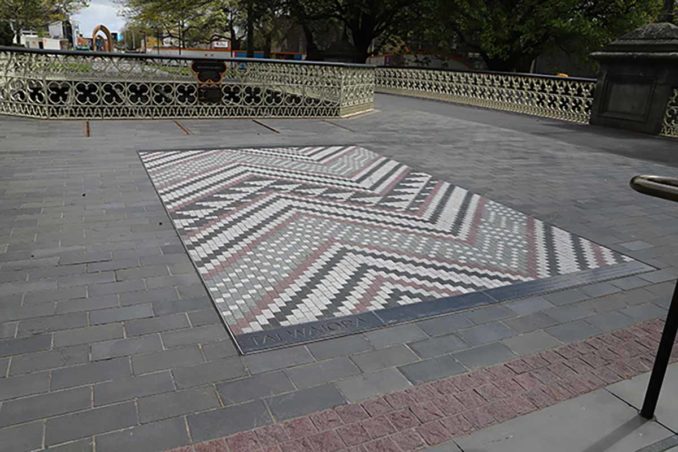
Literary Trail Pieces / Pepeha
An extract from Kemps Deed (1848) addresses Queen Victoria, reflecting the whakatauki that underpins Te Runanga o Ngāi Tahu:
Ko ō mātou kāinga nohoanga,
ko ā mātou mahinga kai,
me waiho mārie mō ā mātou tamariki,
mō muri iho i a mātou.
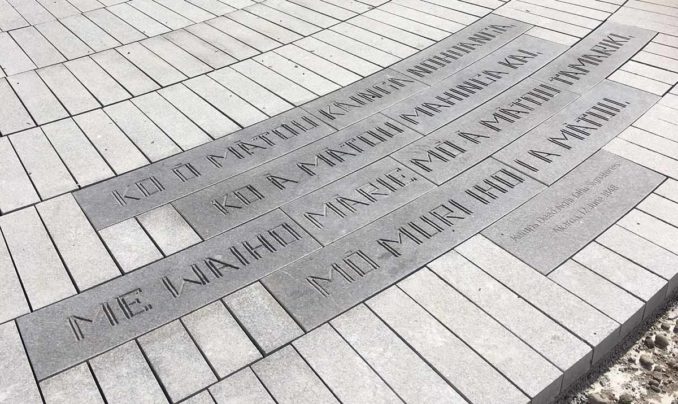
The Deal (Fiona Farrell, 2015), references early interaction between Ngāi Tahu and settlers:
In the Market Place
They traded leaves for a song,
Solid ground for a fistful of water.
Mana Motuhake
Mana Motuhake (Fayne Robinson, 2019) acknowledges Ngāi Tūāhuriri standing in this place while flanking Queen Victoria in support.
Parerau
Parerau (Jennifer Rendell, 2018) acknowledges the co-existence of Ngāi Tahu and Pakeha history, brought together by the natural environment.
Kanakana Table
A new place for sharing kai adjacent to the tauranga waka, Te Ahi Kaa and a significant Tī Kouka. The table (Keri Whaitiri) features a kanakana (southern lamprey) and integrates a karakia mō te kai (blessing for food).
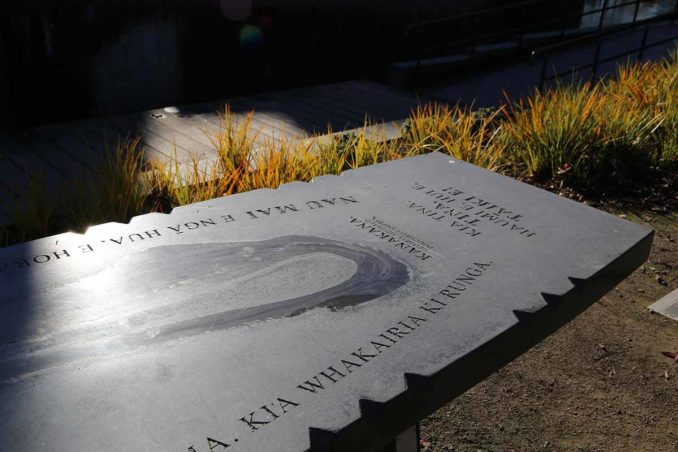
Te Ahi Kaa
With the blessing of master carver, Riki Manuel, the 6m high totara poupou created for the 1990 Treaty commemorations has been fully restored and provided a more appropriate setting.
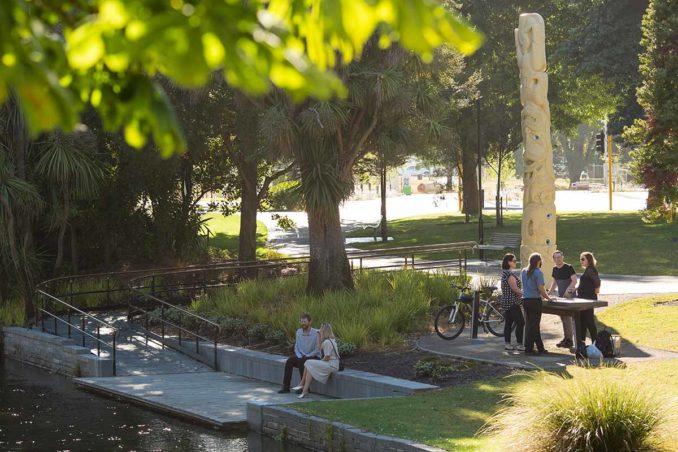
About 17,500 new plants were added to the square and about 170,000 new pavers laid. These elements follow the general layout of the existing design, so to the casual observer it will feel as though things have been brought back to the way they were before 2010.
For many walking through the city centre, the aural and visual din of construction and the emotional impact of the nearby shattered Cathedral creates a sense of disorientation. Now, within that chaos, an oasis of calm and a tie to the past has been restored.
More than an exercise in dropping ‘cultural art’ into a European square, the design team sought a collective expression of who we are in Ōtautahi Christchurch, through thoughtful spatial design, materiality and meaning. Victoria Square epitomizes collaboration through mutual trust, respect and understanding; working kanohi ki te kanohi, pakahiwi ki te pakahiwi (face-to-face and shoulder-to-shoulder).
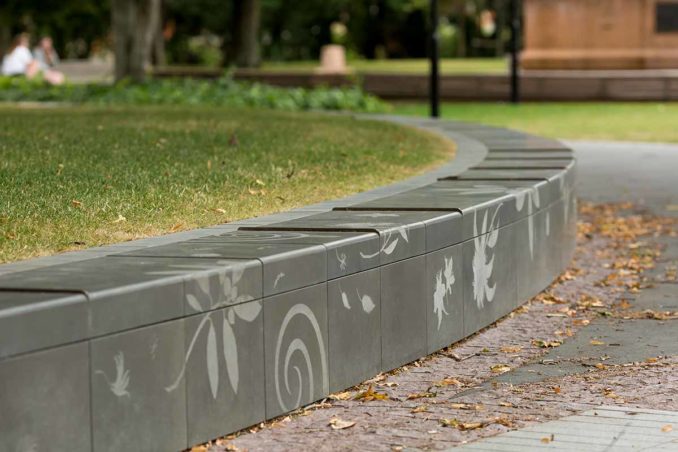
Victoria Square Restoration
Location: Christchurch, New Zealand
Client: Otakaro
Designers: Boffa Miskell, in collaboration with Matapopore
Project Team: Nik Kneale (design lead), Dylan Robinson, Sally Bishop, Hilary Blackburn, Claire Kelly
This project was developed subsequent to the Avon River Precinct; which was designed by Opus, Boffa Miskell and LandLAB.
Text: Boffa Miskell
Photos: Sarah Rowlands/Boffa Miskell

